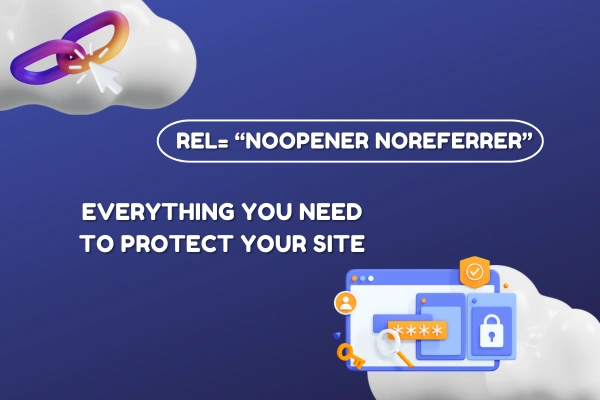In the current digital landscape, the fusion of e-commerce and social media has birthed an innovative avenue of social commerce platforms. Small businesses and startups, once constrained by limited resources and visibility, are now leveraging these platforms to navigate a competitive marketplace. This article aims to explore the profound impact of social commerce on these burgeoning enterprises and how it’s revolutionizing their growth strategies.
1. Introduction: The Emergence of Social Commerce Platforms

The emergence of social commerce represents a seismic shift in the way businesses interact with consumers. These platforms blend the social experience with the convenience of shopping, fostering an environment where users can discover, share, and purchase products directly through social media channels.
2. Leveling the Playing Field for Small Businesses
a. Enhanced Reach and Visibility
Social commerce platforms provide small businesses and startups with an opportunity to showcase their products to a global audience. Leveraging the reach of social media, even niche businesses can gain exposure to a wider market, breaking geographical barriers.
To enhance your online presence further, consider creating a digital business card, offering a modern and convenient way to share information and connect with potential customers.
b. Affordable Marketing and Promotion
Traditional advertising methods can be expensive for smaller businesses. Social commerce platforms offer cost-effective marketing tools, allowing businesses to promote their products through targeted ads, influencer collaborations, and organic content creation.
3. Facilitating Direct Consumer Engagement
a. Real-time Customer Interaction
Social commerce platforms enable direct and immediate engagement with customers. Businesses can promptly respond to inquiries, provide product information, and offer personalized assistance, fostering a stronger connection with their audience.
b. User-Generated Content and Community Building
Small businesses leverage user-generated content to establish a community around their brand. Encouraging customers to share their experiences, reviews, and content related to the products creates a sense of community and authenticity, influencing purchasing decisions.
4. Seamless Shopping Experience and Conversion Rates
a. Simplified Purchase Journey
By integrating shopping features within social platforms, businesses streamline the path to purchase. Users can browse, discover, and buy products seamlessly within the same interface, reducing the barriers to completing transactions.
b. Boosted Conversion Rates
The integrated shopping experience often leads to increased conversion rates. Users are more likely to make purchases when they can do so within the same platform where they discover products, minimizing steps and potential drop-off points in the buying process.
5. Data-Driven Insights and Targeted Marketing
a. Analyzing User Behavior
Social commerce platforms offer valuable insights into user behavior and preferences. Small businesses can gather data on consumer interactions, purchase patterns, and engagement metrics, providing a deeper understanding of their target audience.
b. Personalized Marketing Strategies
Utilizing the data collected, businesses can create personalized marketing campaigns. Tailoring content and product offerings based on user preferences and behaviors enhances the relevance of their marketing efforts, driving more impactful campaigns.
6. Empowering Innovation and Growth
a. Market Testing and Product Development
Social commerce platforms serve as testing grounds for new products or services. Small businesses can gauge market response to new offerings, enabling them to refine products based on real-time feedback.
b. Scaling and Global Expansion Opportunities
These platforms pave the way for small businesses to scale their operations. With the potential for global reach, businesses can expand their customer base beyond local limitations, facilitating global expansion.
7. Challenges and Best Practices for Leveraging Social Commerce
a. Navigating Competition and Algorithms
Businesses encounter challenges in standing out among competitors and navigating evolving algorithms. The need for creative, high-quality content and continuous adaptation to platform changes is crucial.
b. Best Practices for Success
Embracing authenticity, consistent engagement, strategic content creation, and staying updated with platform changes are key best practices for successful utilization of social commerce.
8. Success Stories and Real-Life Examples
Illustrating success stories of small businesses and startups that have thrived through social commerce platforms offers practical insights and inspiration. Case studies showcase how these platforms have catapulted growth and success.
9. The Future of Social Commerce for Small Businesses
Exploring the trajectory of social commerce unveils potential developments such as augmented reality shopping, enhanced AI-driven targeting, and seamless integration across platforms, indicating an even more promising future for small businesses and startups.
10. Transforming the Business Landscape
The integration of social commerce platforms has revolutionized the growth prospects of small businesses and startups. By democratizing access to a global market, enhancing consumer engagement, and offering innovative tools, these platforms are empowering these businesses to compete on a larger scale. As the landscape evolves, these tools continue to redefine the future of commerce for emerging enterprises, ushering in an era of unprecedented growth and opportunity.
Social commerce platforms serve as a catalyst for transformation, empowering the once limited capabilities of small businesses and startups. As they continue to harness the power of these platforms, these enterprises are reshaping the business landscape, stepping into a future brimming with potential and possibilities
The Future of Social Commerce for E-commerce Brands
In the vast expanse of the digital realm, the amalgamation of social media and e-commerce has engendered a revolutionary landscape known as social commerce. As technology advances and consumer behaviors evolve, e-commerce brands find themselves at the cusp of an unprecedented transformation in the realm of social commerce. This article delves into the trajectory of social commerce, exploring the imminent future and the transformative impact it will have on e-commerce brands.
1. The Convergence of Social Media and E-commerce
The convergence of social media and e-commerce has not only blurred the lines between social interactions and buying but has also presented a golden opportunity for e-commerce brands. As social commerce evolves, brands must understand and adapt to the changing dynamics to stay ahead in a highly competitive market.
2. Rise of Shoppable Features and Integrated Platforms
a. Shoppable Posts and Stories
The integration of shopping features within posts and stories on platforms like Instagram, Facebook, and Pinterest has redefined the way users discover and purchase products. This trend is likely to expand further, offering more seamless and direct purchasing opportunities.
b. Integration Across Platforms
The future of social commerce will see increased integration across multiple platforms. Brands will look to streamline the shopping experience, allowing users to explore and purchase products without leaving their preferred social media platform.
3. Augmented Reality and Virtual Try-Ons
The implementation of augmented reality for virtual try-ons and product visualization is on the rise. The future will likely witness further developments in this area, allowing users to virtually experience products before purchasing, enhancing their confidence in buying.
4. Influencer-Led Shopping Experiences
Influencer marketing has been pivotal in social commerce. Moving forward, influencers will play a more substantial role in guiding shopping experiences, providing reviews, and hosting live shopping events, which can significantly impact purchasing decisions.
5. Artificial Intelligence for Personalization
The utilization of AI in social commerce is anticipated to grow. AI-driven algorithms will offer personalized product recommendations, making the shopping experience more tailored to individual preferences and behaviors.
6. User-Generated Content and Community Engagement
UGC will continue to play a crucial role in brand engagement. E-commerce brands will prioritize fostering communities and encouraging customers to share their experiences, creating a sense of authenticity and community around their products.
7. Data-Driven Insights and Targeted Marketing
The future of social commerce for e-commerce brands will heavily rely on data-driven insights. Brands will leverage consumer data from social media analytics to create targeted marketing strategies, optimizing ad targeting and content creation for maximum engagement.
8. Sustainability and Social Responsibility in Social Commerce
Brands are expected to emphasize sustainability and social responsibility. With consumers increasingly conscious of ethical consumption, e-commerce brands will need to incorporate these values into their social commerce strategies to resonate with their audience.
9. Challenges and Opportunities for E-commerce Brands
a. Navigating Algorithm Changes and Competition
E-commerce brands will face the challenge of staying visible amidst evolving algorithms and fierce competition. Adapting to changes and standing out through authentic content will be critical.
b. Embracing Innovation and Adaptability
Opportunities lie in embracing innovation and being adaptable. E-commerce brands that swiftly adopt new technologies and consumer trends can gain a competitive edge in the evolving social commerce landscape.
10. Success Stories and Real-Life Examples
Exploring success stories of e-commerce brands that have thrived in social commerce showcases the potential and the transformative impact it has had on their growth and market positioning.
11. The Future of Social Commerce: Trends and Predictions
The future of social commerce for e-commerce brands is characterized by further integration, enhanced personalization, and immersive shopping experiences. AR, AI, and community-driven content will be instrumental in shaping this future.
12. Embracing the Transformative Potential
The future of social commerce is an ever-evolving tapestry, offering e-commerce brands an opportunity to innovate and engage consumers in novel ways. As technology advances and consumer behaviors shift, brands that embrace these changes and tailor their strategies to the evolving landscape will undoubtedly emerge as frontrunners in the digital market.
The future of social commerce for e-commerce brands is a landscape ripe with innovation and transformative potential. As technology continues to evolve, these brands have the opportunity to redefine the shopping experience, connect with consumers on a deeper level, and chart a path toward greater success in the dynamic world of social commerce.








